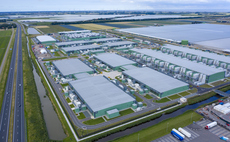Off-site and into colocation in record time, Imperial is laying the template for its sector peers
Paul Jennings, head of ICT service operations at Imperial College London, is busy migrating the institution's on-site data centre to a co-location scheme with data centre provider Infinity. "Bot...
To continue reading this article...
Join Computing
- Unlimited access to real-time news, analysis and opinion from the technology industry
- Receive important and breaking news in our daily newsletter
- Be the first to hear about our events and awards programmes
- Join live member only interviews with IT leaders at the ‘IT Lounge’; your chance to ask your burning tech questions and have them answered
- Access to the Computing Delta hub providing market intelligence and research
- Receive our members-only newsletter with exclusive opinion pieces from senior IT Leaders




















